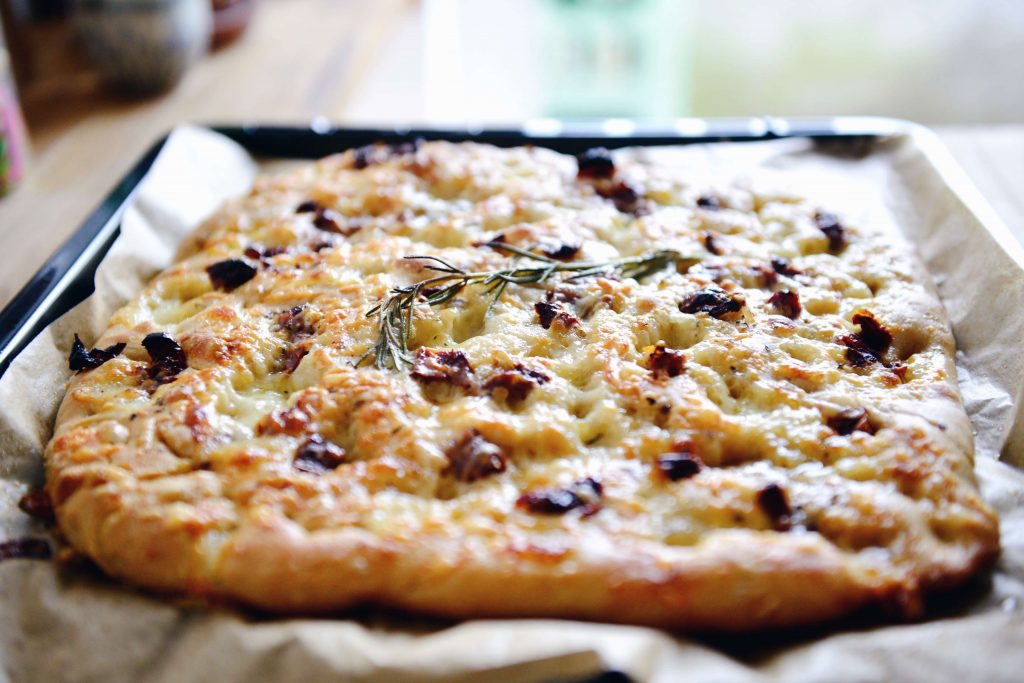 Do you love a good barbecue with nicely roasted goods and matching spreads that are meant to be wiped away with a piece of bread? Do you crave a good sandwich bread that soaks up all the juice and sauce? And do you like to snack away and plain bread with butter from time to time too? I feel you! Enter, cheesy spelt focaccia that is sure to cater to all of those moments. It’s a staple a for me. Especially if there are many hungry mouth to feed.
Do you love a good barbecue with nicely roasted goods and matching spreads that are meant to be wiped away with a piece of bread? Do you crave a good sandwich bread that soaks up all the juice and sauce? And do you like to snack away and plain bread with butter from time to time too? I feel you! Enter, cheesy spelt focaccia that is sure to cater to all of those moments. It’s a staple a for me. Especially if there are many hungry mouth to feed.
Luckily the recipe is pretty straightforward. Like with any yeast dough the only thing you need to add is time. All other steps are not even worth mentioning. I usually go for my favorite toppings: gooey mozzarella, some hard cheese, rosemary and a few slices of dried tomato (see note below), refined with tasty oil. Not just any oil, but the oil those dried tomatoes bathed in before. This herb and garlic infused oil is a true gem and too good to waste.
I like this Italian flavoured variation, but feel free to adapt the toppings to your liking. On my list are variations like pecorino and salami, olives and fresh cherry tomatoes, as well as a FODMAP friendly version that incorporates the best of both Italy and the Middle East: Fluffy focaccia backed in savory tomato sauce, topped off with a breakfast egg. In case you prefer it good and simple, you might want to opt for sea salt and nigella (black caraway) seeds for that typical middle eastern flat bread taste.
Cheesy Spelt Focaccia with Dried Tomatoes and Cheese
(wheat-free, low fructose)
Dried Tomatoes: According to the FODMAP guide by Monash University you should be fine consuming 2 pieces of dried tomatoes per serving. I tried this recipe with 5-8 pieces, which leaves you with exactly 2 pieces per serving. If you are an experienced tomato eater you might want to add more to make the tomato taste stand out. On a side note, I strongly recommend experimenting with tomatoes if you haven’t already.Their distinct Umami taste is hard to mimic and something I really miss under the low fructose diet.
Spelt Flour: As I’m only 95% of the time gluten-free I prepare this focaccia with spelt flour. I use alternating proportions of different types of spelt flour – basically I use whatever I have at home 🙂 So far it worked out every single time. I wouldn’t recommend an all whole grain spelt focaccia though to keep it as fluffy as possible.
Ingredients (Serves 4)
Dough
300 g spelt flour (for bread)
200 g light spelt flour
1 tsp Himalayan salt
10 g fresh yeast
400 ml water (room temperature)
Toppings
1 mozzarella
1 hand full of hard cheese like emmental or parmesan
min. 5-8 dried tomatoes in oil
50 ml herbed oil from the tomatoes, olive oil or garlic infused oil
1 twig fresh rosemary
sea salt
In a big bowl mix flour and salt. Crumble fresh yeast on top. Slowly add water while mixing with an electric blender (dough hook) on high speed. Mix for at least 6 minutes. The dough gets less sticky and firms up with time. When you are done it should’ve formed into a ball that and won’t stick to the sides of the bowl anymore. That’s when you fully activated the gluten in the flour.
Tightly cover the bowl with cling film. I use a rubber band to fixate it. Pop the dough into the fridge for about 12-24 hours and let rise. In case you want to bake the focaccia the same day, place it in a warm corner of your kitchen and let rise for 2-3 hours. When ready to bake, preheat the oven to 250°C/ 480° F.
Cut mozzarella into small cubes and grate hard cheese. Slice dried tomatoes into small pieces. Add dough on top of a baking sheet lined with baking paper. Try to spread the dough evenly. Add oil and massage the oil into the dough with your finger tips. Spread cheese, dried tomatoes and rosemary on top and gently press into the dough. Add some sea salt and bake for about 20-25 minutes until bubbly and golden brown. Serve immediately if possible. If making ahead cover with a clean kitchen towel as soon as you take it out of the oven to avoid the focaccia from drying out.
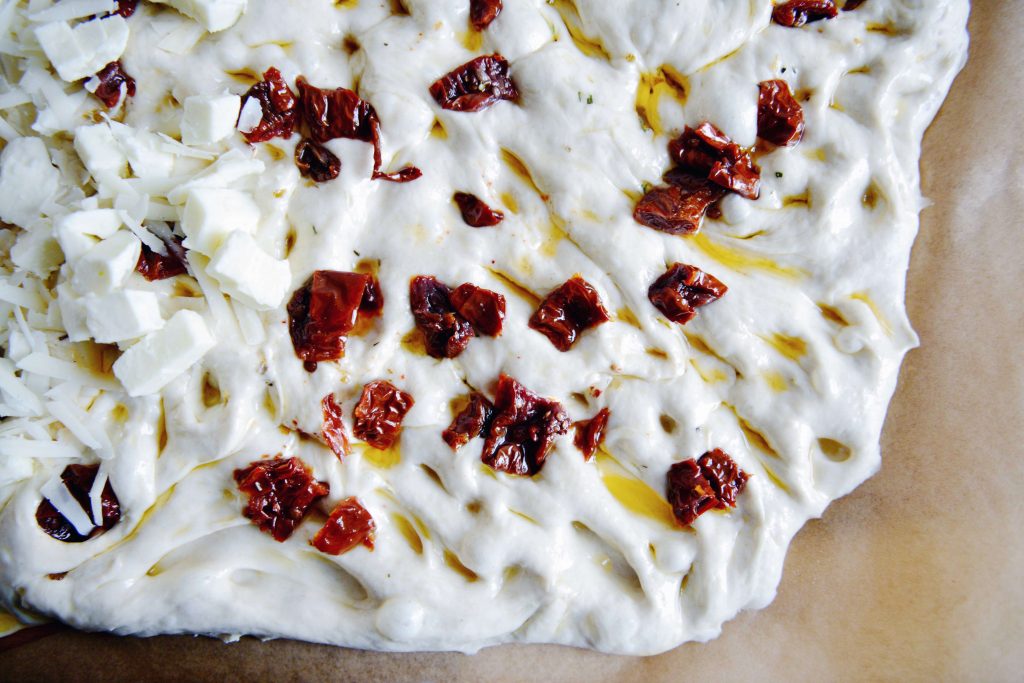
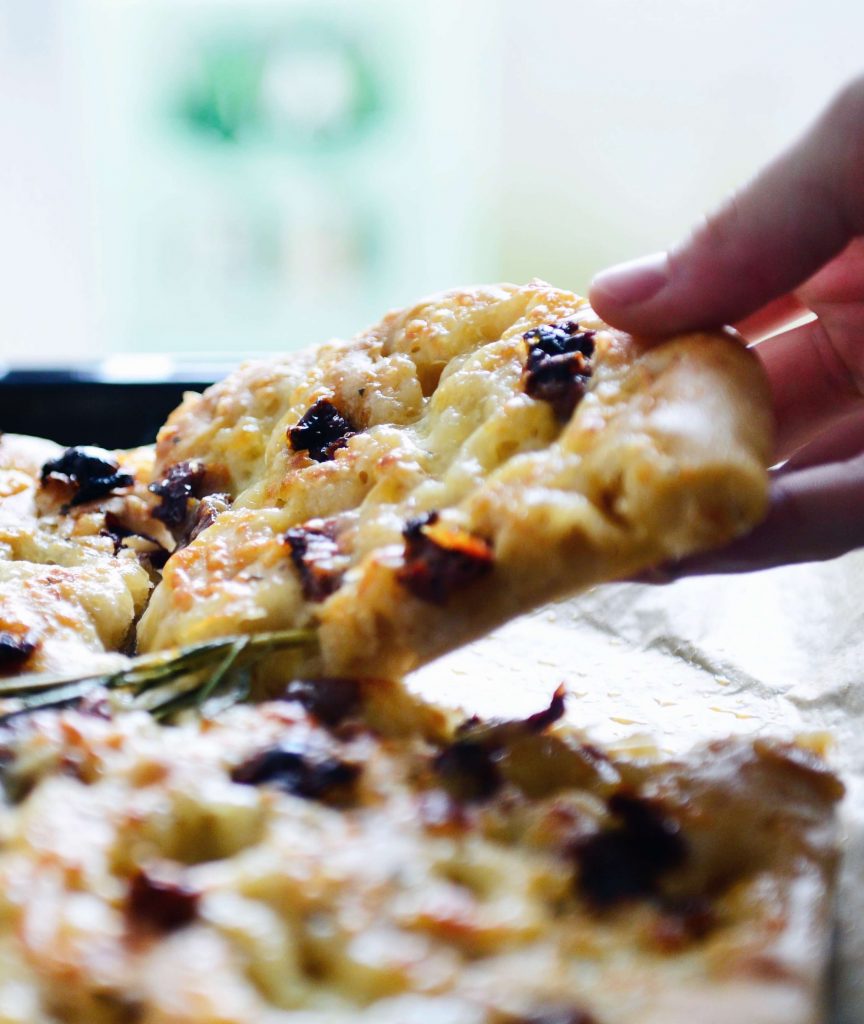
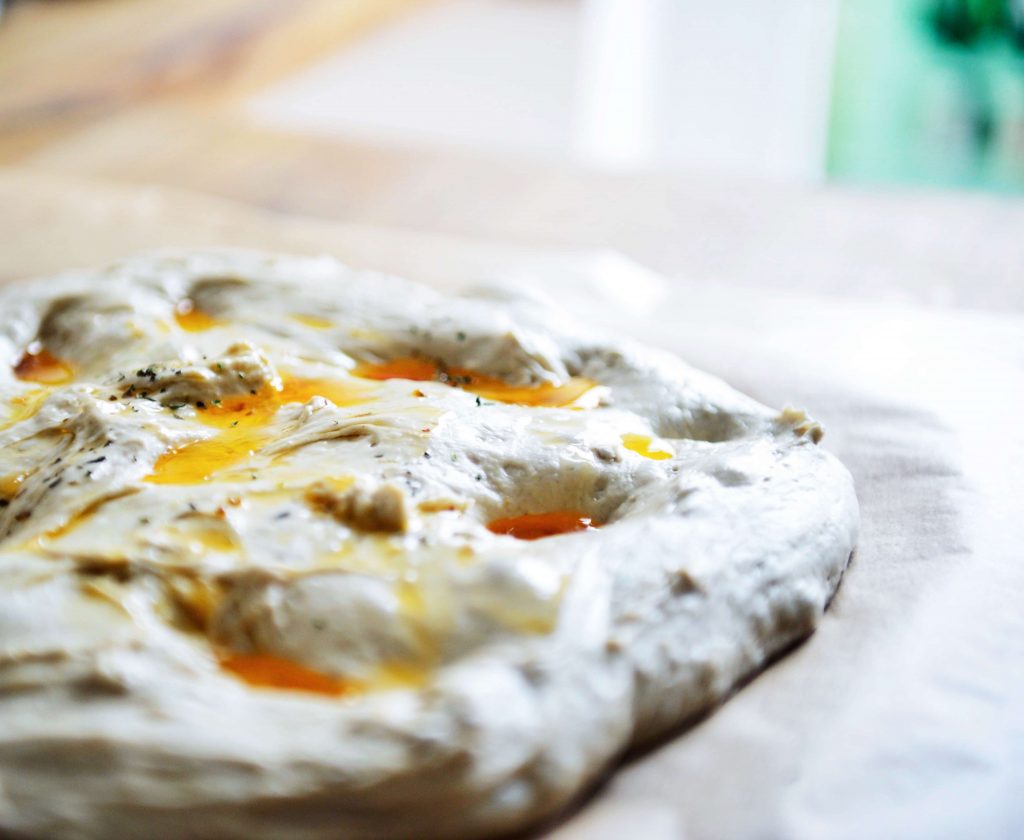
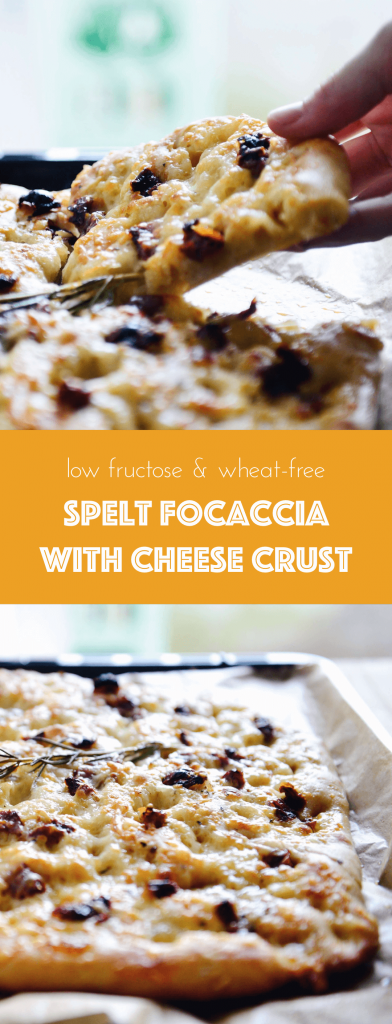
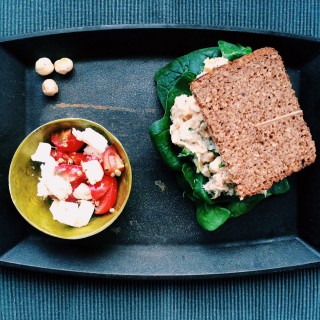
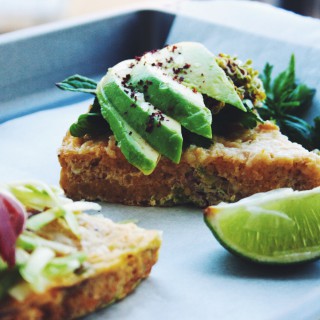
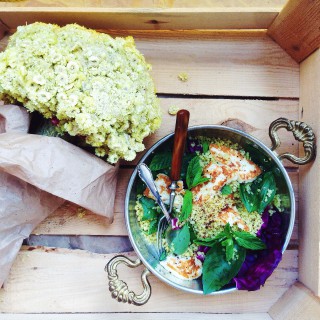
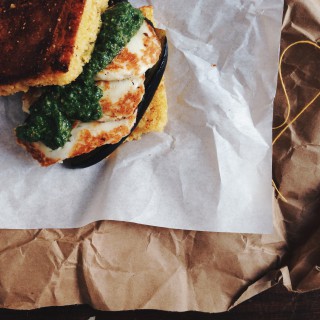
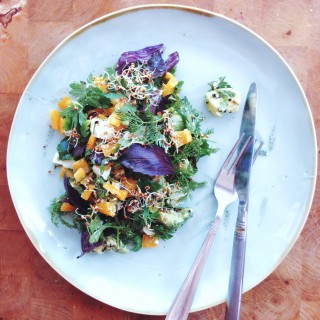
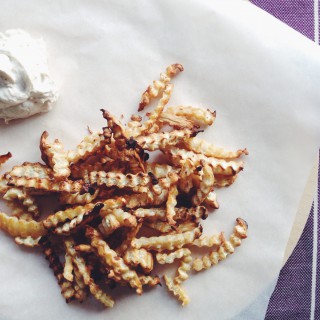
Hallo Deniz,
ich bin gestern auf deinen Blog aufmerksam geworden und bin begeistert. Vor einem halben Jahr habe ich erfahren, dass ich eine Fructose Malabsorption habe. Seitdem teste ich immer wieder rum, mit mindergroßen Erfolg aber hier finde ich einige Tipps und Tricks, die mich neu motivieren. Ich habe gelesen, dass du zusätzlich entschieden hast, auf Gluten zu verzichten und dich danach besser gefühlt hast. Ich habe mich – vor allem nach dem Lesen deiner Rezepte – in den Supermarkt bewegt und Zutaten für allerlei Rezepte besorgt. Hier nun meine eigentliche Frage: Viele Rezepte, wie dieses hier, beinhalten Dinkel. Dies ist jedoch nicht glutenfrei, oder? Daher wollte ich mich mal erkundigen, warum du dieses Mehl isst? Ist es besser verträglich als Weizen oder Roggen? Oder sollte ich in der Karenzzeit lieber darauf verzichten? Wie sind da deine Erfahrungen? Ich will es einfach nochmal probieren und es dieses Mal möglichst richtig angehen. Das ganze versuche ich ohne Ernährungsberater.
Toller Blog und vielen Dank für all die Tipps und Tricks (besonders habe ich mich über die Idee der fruktosefreien Gummibärchen von Frusano gefreut) haha
Liebe Grüße
Vanessa
Liebe Vanessa, schön, dass du schreibst! Leider ist deine Frage total untergekommen, aber hier endlich die Antwort Richtig, Dinkel ist nicht glutenfrei, in der Regel jedoch wesentlich besser verträglich als Weizen und Roggen. Ich ernähre mich im Alltag zu etwa 95% glutenfrei. Ich bin quasi von Weizen auf Dinkel auf glutenfrei umgestiegen. Falls ich also gelegentlich eine Ausnahme mache, dann nur bei Sauerteigbrot oder selbstgebackenem mit Dinkelmehl. Daher findest du hier auch immer wieder Rezepte mit diesem Mehl. Ich hab festgestellt, dass gelegentlich etwas Dinkel schon in Ordnung ist. Wenn ich es jedoch übertreibe bekomm ich direkt wieder einen Blähbauch 🙁 In der Karenzphase (vor 8 Jahren!) hab ich tatsächlich noch Weizen gegessen. Das würd ich heute jedoch anders machen. Wie geht es dir denn aktuell mit der Umstellung? Wie kommst du zurecht?
Liebe Grüße, Deniz
p.s. der Tipp mit den Gummibärchen ist nobelpreisverdächtig, oder? 😉